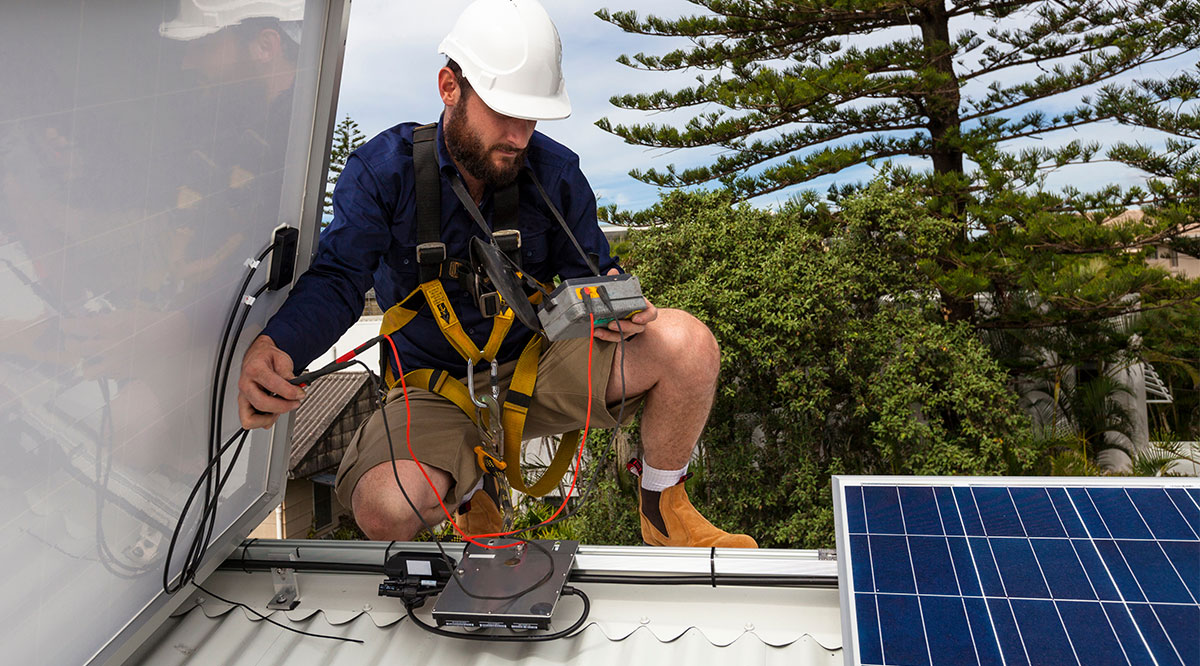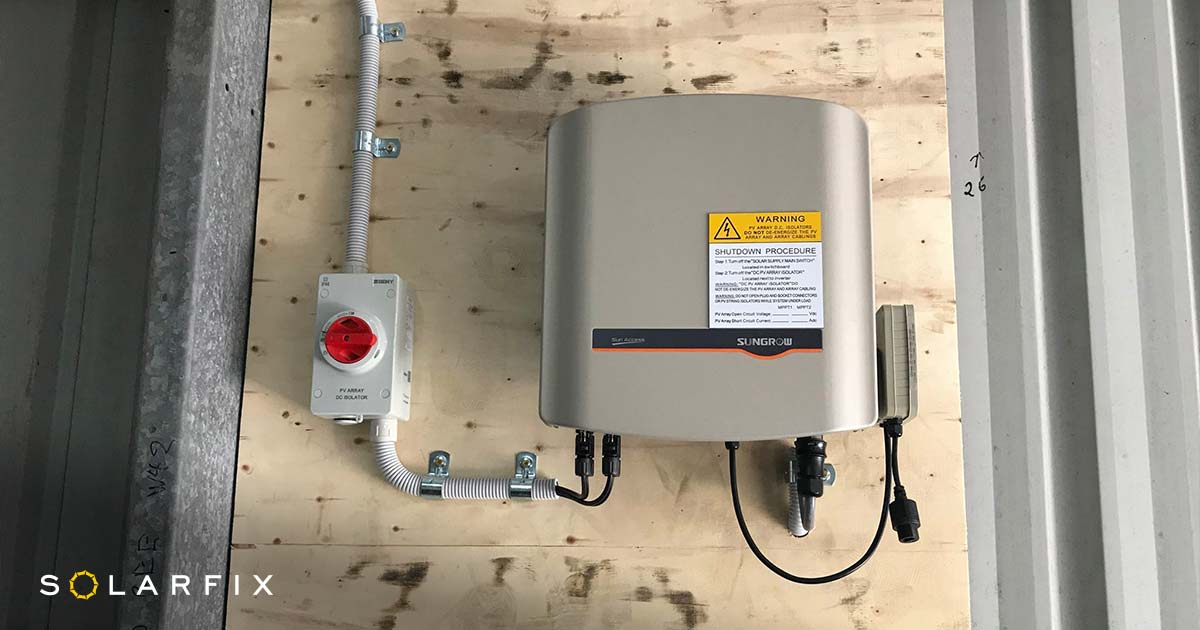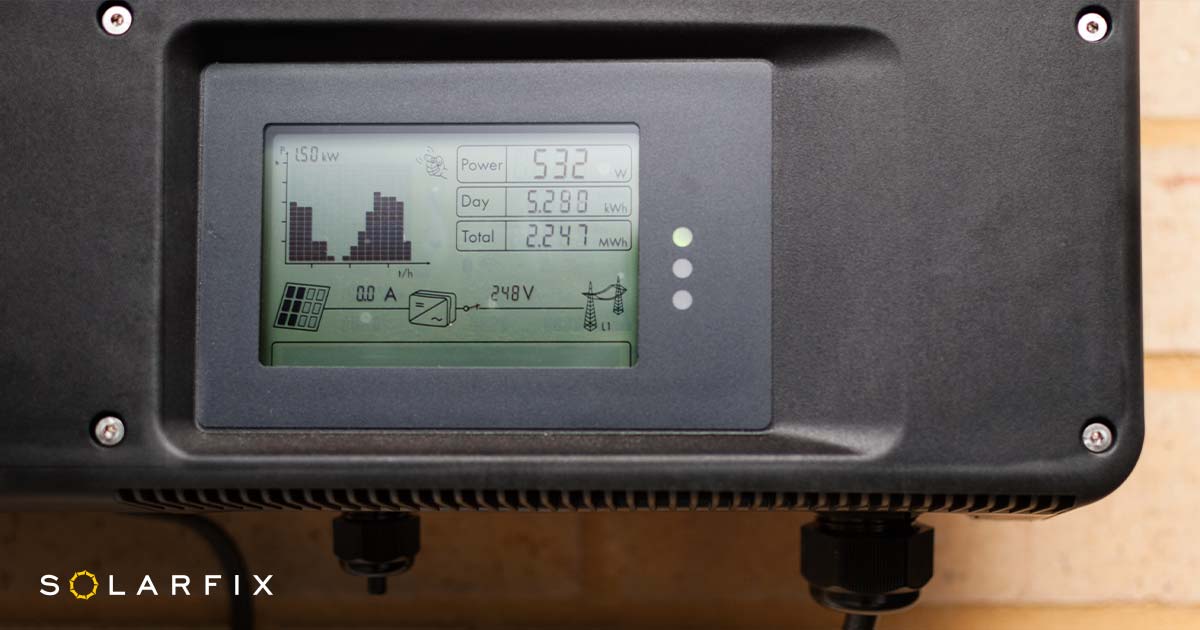5 Common Solar Inverter Error Faults & How to Repair Them
Learn how to identify and repair common solar inverter faults like overcurrent, undervoltage, islanding, overheating, and faulty communication.
What is a solar inverter and why is it important?
A solar inverter is a critical component of a photovoltaic system, converting the direct current (DC) electricity generated by the solar panels into alternating current (AC) electricity that can be used in homes and businesses.
Without a solar inverter, the electricity generated by the solar panels would be useless for powering appliances and devices.
Types of solar inverters
There are several types of solar inverters available on the market, including grid-tie inverters, off-grid inverters, and hybrid inverters.
- Grid-tie inverters are used in systems that are connected to the grid, allowing excess electricity to be sold back to the utility company.
- Off-grid inverters are used in systems that are not connected to the grid, and are typically used in remote areas where grid connection is not available.
- Hybrid inverters are a combination of grid-tie and off-grid inverters, and can be used in both grid-connected and off-grid systems.
Common Solar Inverter Error Faults in Australia
Like any piece of equipment, solar inverters can experience faults and errors that can disrupt the operation of the solar system.
In this section, we will discuss some of the common error faults that may occur in a solar system inverter in Australia. Understanding the causes of these errors and how to troubleshoot and repair them is important for maintaining the efficiency and effectiveness of your solar system.
Overcurrent error
This error occurs when the current flowing through the inverter is too high, and can be caused by a variety of factors such as a short circuit or a faulty solar panel.
Undervoltage error
This error occurs when the voltage supplied to the inverter is too low, and can be caused by issues such as a weak battery or a faulty panel.
Islanding error
This error occurs when the inverter continues to operate even though it is not connected to the grid. This can be a safety hazard as it may cause the inverter to feed electricity back into the grid, potentially leading to injury or damage.
Overheating error
This error occurs when the inverter’s internal temperature becomes too high, which can be caused by a variety of factors such as a faulty fan or a blocked ventilation system.
Faulty communication error
This error occurs when the inverter is unable to communicate with the solar panels or the grid, which can be caused by a variety of factors such as a faulty communication cable or a damaged inverter.
Troubleshooting and Repairing Solar Inverter Faults
To troubleshoot a solar inverter fault, it is important to first identify the cause of the issue. This can be done by checking the inverter’s display panel for any error codes or messages, as well as by performing a visual inspection of the inverter and its components.
Tips for repairing common solar inverter faults
Once the cause of the fault has been identified, there are a few steps you can take to repair the issue:
- For overcurrent errors, check the solar panels for any visible damage or debris that may be causing a short circuit. If the panels are clear, you will need an inverter repair technician to check the inverter’s DC input connectors for loose or damaged wires.
- For undervoltage errors, an inverter repairer will need to check the condition of the battery and replace it if necessary. If the battery is in good condition, they check the panel’s connections to ensure that they are secure and not damaged.
- For islanding errors, a solar repair expert will check the inverter’s connections to the grid to ensure that they are secure and not damaged. They may also need to check the inverter’s settings to ensure that it is properly configured to detect islanding.
- For overheating errors, check the inverter’s ventilation system to ensure that it is clear of any debris or obstructions. If the ventilation system is clear, a solar repairer will need to be called to check the inverter’s internal components for any signs of damage or malfunction.
- For faulty communication errors, if you’re experiencing this error, have a solar repair technician check the communication cables for any visible damage or loose connections. If the cables are in good condition, they will check the inverter’s internal components for any signs of damage or malfunction.
When to seek professional assistance for solar inverter repairs
If you are unsure of how to troubleshoot or repair a solar inverter fault, it is recommended to seek the assistance of a professional. Solar inverters contain complex electronic components, and attempting to repair them without the proper knowledge and expertise can be dangerous and may cause further damage.
Ensuring the efficiency and effectiveness of your solar system
By understanding the common solar inverter error faults that may occur in Australia and how to troubleshoot and repair them, you can help ensure the efficiency and effectiveness of your solar system. This is important not only for the financial savings that a well-functioning solar system can provide but also for the environmental benefits of using clean and renewable energy.
Contacting the Solarfix Solar Repair Experts for professional assistance
If you are experiencing any of the error faults discussed in this article, it is important to take action to address the issue as soon as possible to ensure the continued operation and efficiency of your solar system.
If you are unsure of how to troubleshoot or repair the error, it is recommended to contact Solarfix‘s solar repair experts on 0497 524 407. Our team of experienced solar technicians have the knowledge and expertise to identify the cause of the error and provide a solution to get your solar system back up and running smoothly.
Don’t let a faulty solar inverter disrupt your access to clean and reliable energy. Contact our Solar Repair Experts today and let us help you get your solar system back on track.



Sorry, the comment form is closed at this time.